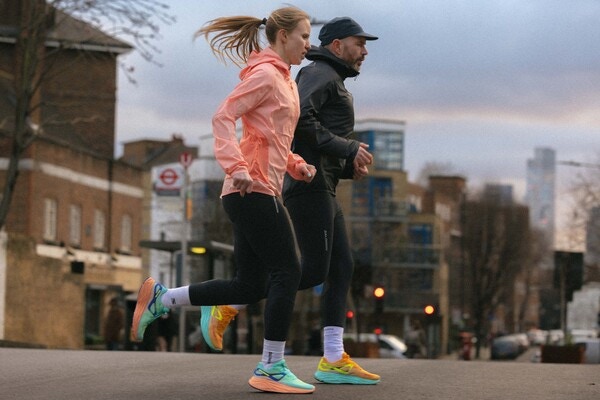“Running has become a mainstream sport in recent years. Until recently, a runner was an athlete who learned to run like one learned to play tennis; he was a specialist in his sport.
Things have really changed, which is good because the widespread practice of jogging has contributed in a big way to the democratization of physical activity for all.
But there is a catch! Running for everyone does not mean that we’re all prepared, physically or intuitively, for running.
François Fourchet and Guillaume Servant – physiotherapists specializing in running injuries and authors of, “Je bouge… en courant sans me blesser” (under the direction of Professor Grégoire Millet) ”
Would you like to know more about the benefits of running?
Running is the regular practice of a natural activity, which can be learned!
But then again, how do you reduce the risk of getting injured? Of course, there is no simple answer.


“Protect yourself” by doing muscle-strengthening exercises
It is important to build the strength needed by your muscles and other tissues (tendons, bones…) to be able to run on the track, on the road or in the mountains on a regular basis.
One of the most common causes of injury for runners is lack of strength. First, there’s the muscular aspect: calves, foot muscles, glutes, the sheathing etc. There are also your tendons, like the Achilles tendon for example, that are equally vulnerable (in this case, we’re talking about resistance to stress).
“GPP is the key….” GPP (General Physical Preparation), is a well-known concept among athletes that refers to consistent strength training.
GPP is a simple solution but also essential for the prevention of injuries. By focusing on this before any other training, GPP helps restore your body’s ability to endure the demands that running puts on it.
Building strength is one thing…
… but now that you are “armed”, the second aspect of preventing injury is management of the load. In other words, managing the quantity of your training in regard to the type of training, the frequency, and especially its evolution over time. This concept is really difficult to get your head around because not everyone has the experience of a coach or the opportunity to train with one.
So most runners compare themselves to others, compare themselves to race winners, or try to follow the training plans of elite runners.
But one thing is certain, it’s never a question of absolute value. What’s important is not “how many kilometers did you run today” but how many kilometers you’ve done so far to get to this point. There are those who can do 200 km in one week without getting injured, and there are others who often get injured as soon as they exceed 30 km.
Everyone is not created equal when it comes to injury, and above all, we don’t all have the same background. Some people have been training for years and are therefore better able to withstand heavier training programs. And then there are others who have started to run later in life and who need time, and a gradual progression, to get themselves up to speed.
You have to train to be able to train more. Be patient!
Other causes of injury
Running technique
- There is no universal technique
- The type of stride (heel strike, forefoot strike…) is most often a consequence of a certain technique than the opposite: the choice of a forefoot strike is rarely a means, and indeed more often a consequence. There is no rule that applies to everyone.
- Variety or changing things up is often the key. An excellent report by Marlène Giandolini (Amer Sports Footwear Innovation and Sport Sciences Lab) highlights that in trail running particularly, it is important to vary your training and the different ways you can place your feet when running uphill and downhill, in order to strengthen the different body parts used in each.
Shoes:
What is a bad shoe? A bad shoe is one that is not suitable for you:
- that is not suited to your body type,
- that holds you back,
- that is uncomfortable.
Shoes that are “bad” for you can be “good” for another runner.
You should always be wary of extreme ideas and avoid them. This is especially true between minimalism and maximalism. Your choice should always be a personal one.
A “good” shoe is not enough to prevent injury, because there are so many other factors that come into play. But a bad shoe can be the cause.
Check out our advice on how to best choose your trail running shoes as well as your road shoes.
A healthy lifestyle.
In the conclusion of their book mentioned above, François Fourchet and Guillaume Servant write: “Let’s look no further – in our lives that are often lived at 100 mph – than the reasons behind potential injuries: not enough sleep, too much stress, an unhealthy diet, not enough time spent on the little actions or practices that make the difference… At the end of the day, it might not be that difficult to change a few things and one day hope to be able to run… without getting injured.”
To conclude and summarize: in order to avoid injury, it is important to…
- Strengthen your muscles
- Train gradually
- Pay attention to your running technique
- Find the right pair of running shoes
- Lead a healthy lifestyle













